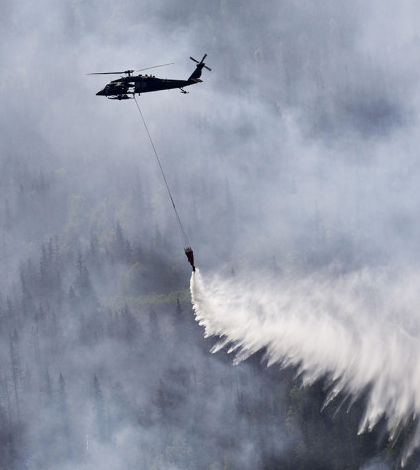Increasing Wildfires In Alaska Create Carbon Concerns

An Alaskan Army National Guard helicopter drops water on a wildfire. (Credit: Sgt. Balinda O'Neal / U.S. Army National Guard)
The number of Alaskan wildfires has been increasing and so far this year there have been over 600 wildfires across the state. In a recent article by Wired, Alaska Fire Service officials outline their concerns.
The floors of Alaskan forests are covered in what is known as “duff,” a layer of decomposing material that can be up to a foot thick. Beneath that layer is permafrost and, in recent years, so much of the duff has burned off that the permafrost has been exposed.
The biggest concern is that Alaska’s climate is warming and now that the permafrost is exposed, it will be threatened, not only by fires but by the weather. Eric Miller, ecologist at the Fire Service, told Wired it could take up to ten years for the duff to accumulate to the four-inch thick surface that once protected the permafrost.
Permafrost holds an estimated 1.4 trillion tons of carbon. With fires burning trees, duff, and now permafrost, the atmosphere is in for a big uptake in carbon. It’s become a cycle of carbon being released by fires, causing the atmosphere to warm and contribute to more fires.
Top image: An Alaskan Army National Guard helicopter drops water on a wildfire. (Credit: Sgt. Balinda O’Neal / U.S. Army National Guard)





0 comments